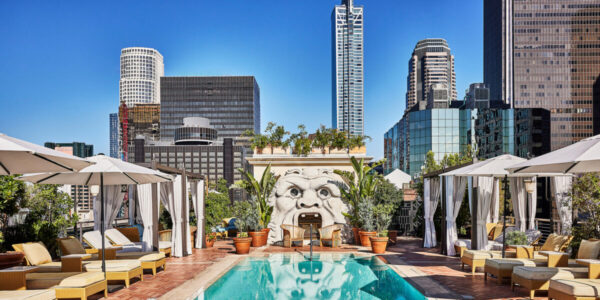
Picture Perfect
“It’s hard to take a terrible picture of Point Reyes,” says Sean Arbabi, “but not all that easy to get a really great one.” He should know; Arbabi, an outdoor photographer and Sunset contributor, teaches workshops at Point Reyes National Seashore, 35 miles north of San Francisco.
Like any good instructor, he makes things fun for novices―but he doesn’t tolerate slackers. Whine that “the beach is totally socked in and there’s nothing to photograph” and he’ll just arch an eyebrow. “There’s always something good to shoot here―if you work at it.”
Point Reyes’ beauty and changeable weather offer rich possibilities to photographers looking to hone their skills (and looking for good places to hike and picnic). Take a camera and you’ll look at Point Reyes in new ways: seeing the beauty of sunshine in the leaves, or in trees wreathed by fog.
Workshop
Framing a shot
Subject
Bear Valley by morning
Point Reyes is filled with wildlife―from shorebirds to bobcats and elk. Near the Bear Valley Visitor Center, Morgan horses wait in a corral.
Challenge: Hemmed in by forest, this area never gets warm dawn or dusk light.
Tip: Check the corners to make sure something interesting is happening in every part of the shot, and use the fence line or arching branches to frame the horses.
Best time: An overcast day, early to midmorning.
Workshop
Using weather
Subject
Lighthouse in the fog
Most summer afternoons, fog blows in, obscuring scenic vistas. But in the softened light, cypress trees along the lighthouse trail become enigmatic sculptures. Arbabi makes it work. “My favorite proverb,” he says, “is ‘Chance favors the prepared mind.’ ”
Challenges: Rapidly changing weather and light conditions.
Tip: Don’t stop shooting when the fog sweeps in―play with detail shots, silhouettes, and angles.
Best time: Late afternoon to sunset.
Workshop
Finding the right light
Subject
Drakes Bay by dusk
“Light is our god, and weather is its handmaiden,” Arbabi says―a poetic way to say good light is important to any photograph. As he pulls into an overlook near the lighthouse, the beach below looks fairly ordinary in the noon sun. He decides to return near sunset.
Later, with late-afternoon light daubing the sand, Arbabi sets up the tripod and hunches into his jacket as the wind picks up. Still, he waits. “Here, the difference between the right light and the almost-right light is so dramatic that any wait is worthwhile,” he says.
Challenge: Even dramatic landforms like cliffs can look flat and dull in midday light.
Tip: Wait for warm, amber light on the sand and cliffs―it makes the picture. If the weather doesn’t cooperate, use a golden or amber filter to warm up the scene.
Best time: Just before sunset.
